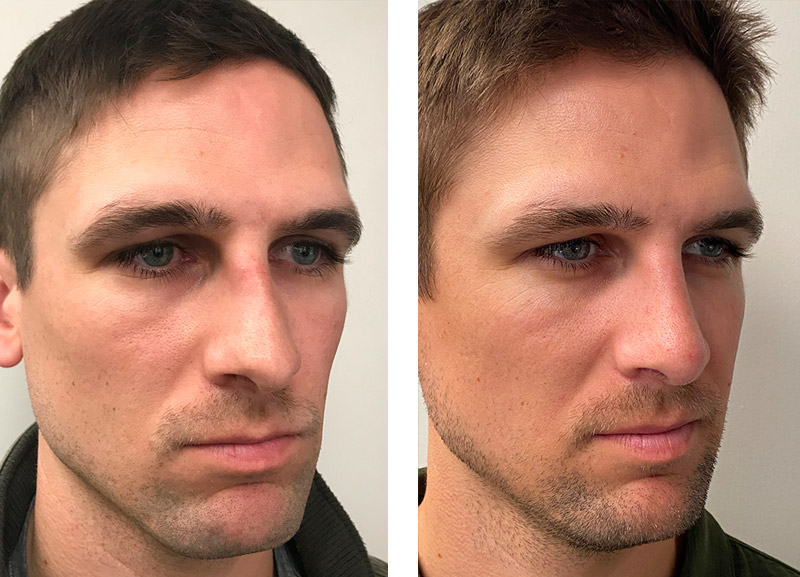An Unbiased View of Nose Job
Table of ContentsWhat Does Austin Rhinoplasty Surgery Mean?Rhinoplasty Surgery Austin Can Be Fun For AnyoneRhinoplasty Things To Know Before You Get This
The septum is quadrangular; the upper half is flanked by two (2) triangular-to-trapezoidal cartilages: the upper lateral-cartilages, which are merged to the dorsal septum in the midline, and laterally attached, with loose ligaments, to the bony margin of the pyriform (pear-shaped) aperture, while the inferior ends of the upper lateral-cartilages are totally free (unattached).Below the upper lateral-cartilages lay the lower lateral-cartilages; the paired lower lateral-cartilages swing outwards, from median attachments, to the caudal septum in the midline (the medial crura) to an intermediate crus (shank) area. Finally, the lower lateral-cartilages flare outwards, above and to the side (superolaterally), as the lateral crura; these cartilages are mobile, unlike the upper lateral cartilages.
e., an external curving of the lower borders of the upper lateral-cartilages, and an inward curving of the cephalic borders of the alar cartilages. The form of the nasal subunitsthe dorsum, the sidewalls, the lobule, the soft triangles, the alae, and the columellaare configured in a different way, according to the race and the ethnic group of the client, hence the nasal physiognomies denominated as: African, platyrrhine (flat, wide nose); Asiatic, subplatyrrhine (low, broad nose); Caucasian, leptorrhine (narrow nose); and Hispanic, paraleptorrhine (narrow-sided nose).

The internal nasal valve comprises the area bounded by the upper lateral-cartilage, the septum, the nasal flooring, and the anterior head of the inferior turbinate. In the narrow (leptorrhine) nose, this is the narrowest part of the nasal respiratory tract. Generally, this location needs an angle greater than 15 degrees for unblocked breathing; for the correction of such narrowness, the width of the nasal valve can be increased with spreader grafts and flaring stitches.
Nasal anatomy: The philtrum. The surgical management of nasal flaws and defects divides the nose into six anatomic subunits: (i) the dorsum, (ii) the sidewalls (paired), (iii) the hemilobules (paired), (iv) the soft triangles (paired), (v) the alae (paired), and (vi) the columella. Surgical correction and reconstruction understand the whole structural subunit impacted by the defect (wound) or deformity, therefore, the entire subunit is fixed, specifically when the resection (cutting) of the flaw incorporates more than 50 percent of the subunit.
Indicators on Rhinoplasty Austin You Should Know
The nasofrontal angle, in between the frontal bone and the nasion normally is 120 degrees; the nasofrontal angle is more severe in the male face than in the female face. The nasofacial angle, the slope of the nose relative to the aircraft of the face, is roughly 3040 degrees. The nasolabial angle, the slope between the columella and the philtrum, is roughly 9095 degrees in the male face, and roughly 100105 degrees in the female face.
When observed from listed below (worm's- eye view), the alar base configures an isosceles triangle, with its pinnacle at the infra-tip lobule, right away below the idea of the nose. The facially in proportion projection of the nasal idea (the distance of the nose's tip from the face) is determined with the Goode Method, in which the forecast of the nasal this hyperlink idea ought to be 5560 percent of the range in between the nasion (nasofrontal junction) and the tip-defining point.
The Goode Approach figures out the extension of the nose from the facial surface by comprehending the distance from the alar groove to the idea of the nose, and then relating that measurement (of nasal-tip forecast) to the length of the nasal dorsum. The nasal forecast measurement is obtained by marking a right triangle with lines parting from the nasion (nasofrontal point) to the alarfacialgroove. rhinoplasty austin.
55:1 to 0. 60:1, is the perfect nasal-tip-to-nasal-length projection. Nose Job: Nasal Class I - rhinoplasty austin tx. The Roman nose. (Nasology Eden Warwick, 1848) Nose Job: Nasal Class II. The Greek nose. (Nasology Eden Warwick, 1848) Rhinoplasty: Nasal Class III. The African nose. (Nasology Eden Warwick, 1848) Rhinoplasty: Nasal Class IV. The Hawk nose. (Nasology Eden Warwick, 1848) Rhinoplasty: Nasal Class V.
( Nasology Eden Warwick, 1848) Nose Surgery: Nasal Class VI. The celestial nose. (Nasology Eden Warwick, 1848) To figure out the patient's viability for going through a rhinoplasty procedure, the surgeon clinically examines him or her with a complete case history (anamnesis) to determine his/her physical and mental health. The prospective patient needs to more information explain to the physiciansurgeon the functional and aesthetic nasal issues that he or she suffers.

In addition, additional to physical viability is mental suitabilitythe client's psychological motive for undergoing nose surgery is important to the surgeon's pre-operative assessment of the patient. The complete physical examination of the rhinoplasty patient identifies if she or he is physically fit to go through and endure the physiologic tensions of nose surgery.
9 Easy Facts About Rhinoplasty Austin Tx Explained
Specific facial and nasal examinations tape-record the client's skin-type, existing surgical scars, and the balance and asymmetry of the visual nasal subunits. The external and internal nasal evaluation focuses upon the structural thirds of the noseupper area, middle area, lower sectionspecifically noting their structures; the measures of the nasal angles (at which the external nose tasks from the face); and the physical characteristics of the naso-facial bony and soft tissues.
In addition, when required, specific teststhe mirror test, vasoconstriction evaluations, and the Cottle maneuverare included to the pre-operative assessment of the prospective rhinoplasty Source client. Established by Maurice H. Cottle (18981981), the Cottle maneuver is a principal diagnostic technique for spotting an internal nasal-valve condition; whilst the patient carefully motivates, the surgeon laterally pulls the client's cheek, consequently replicating the widening of the cross-sectional location of the matching internal nasal valve.